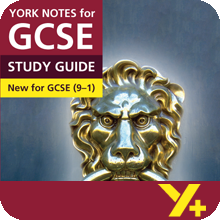Examiner's Notes
You assessed this answer as Grades 6–7.
Hover over the highlighted text to read the examiner’s comments.
Question: Explain the way in which the theme of transformation is explored in the novel.
In your answer you must consider:
- the importance of transformation in the novel
- the different aspects of transformation that are shown.
Christmas is a time of transformation (decorations, Christmas trees and ribbons added to dresses, all of which Dickens depicts in the novel), and Dickens uses this time for the story of Scrooge’s personal transformation. The reader accompanies the main protagonist Scrooge as he transforms from a ‘covetous old sinner’ to ‘as good a man, as the old city knew’. This is a transformation of Scrooge’s morality. The words ‘covetous’ and ‘sinner’ are associated with the Bible and mean people that are greedy for material goods and who go against the word of God.
One way that Dickens shows us Scrooge’s transformation is through the people in his life. In the first Stave, Scrooge is shown to be a cruel and heartless employer, the implication being that the reader hopes that this is going to change. The first ghost that Scrooge meets is Jacob Marley and is now tormented by the guilt of how he exploited the poor in order to make money. Marley, who is weighed down by ‘cashboxes, keys, padlocks’, tells Scrooge, ‘I wear the chain I forged in life.’ The chain is a symbol of Marley’s greed and punishment, and Dickens uses it to personify the consequences of treating people this way.
There are different ways that Scrooge could choose how to behave at the start of the novel. Dickens makes this point when the two gentlemen visit Scrooge in Stave One and ask him to donate money to the poor, which Scrooge declines rudely, asking ‘are there prisons?’ shocking the reader. This is such an important starting point in Scrooge’s transformation, that the Ghost of Christmas Present echoes Scrooge’s own words in order to instruct Scrooge.
Dickens takes the reader through Scrooge’s journey of transformation from miser to a much kinder person, within the novel there is also the story of Scrooge’s earlier transformation from lonely school boy and loving fiancé, to the Scrooge we see at the start of the novel. Belle describes the way his love of money has slowly transformed him. Belle explains that his ‘changed nature’ has caused the end of their engagement. Dickens describes the physical transformation in Scrooge, once avarice ‘had taken root’ and created an ‘eager, greedy, restless motion in the eye’. The metaphor of avarice at the ‘root’ of the young Scrooge conveys to the reader how this would slowly grow and take a stronger hold on Scrooge, until he becomes ‘frosty’ and ‘shrivelled’ by greed.
The second ghost to visit Scrooge is the Ghost of Christmas Past. This Ghost which does not stay in one shape but ‘fluctuated’ in light and dark, with different limbs and features and, in the last moment with Scrooge, has ‘fragments of all the faces it had shown him’. It could be argued that this mysterious appearance symbolises the potential for change and transformation in Scrooge. It appears in direct contrast to the final Ghost of Christmas Yet to Come that is fixed and silent in its black robes, where the time for change has come to an end.
The final Stave has a joyous atmosphere in comparison to the cold and cramped feeling of Scrooge’s office in the opening Stave. Using the pathetic fallacy, Dickens presents the Christmas day weather as ‘No fog, no mist: clear, bright, jovial’. The adjective ‘jovial’ applies both to Scrooge and the weather. Scrooge’s personal transformation is now complete, and the Spirit of Christmas, kindness and generosity is to be found within him for the rest of his life.
